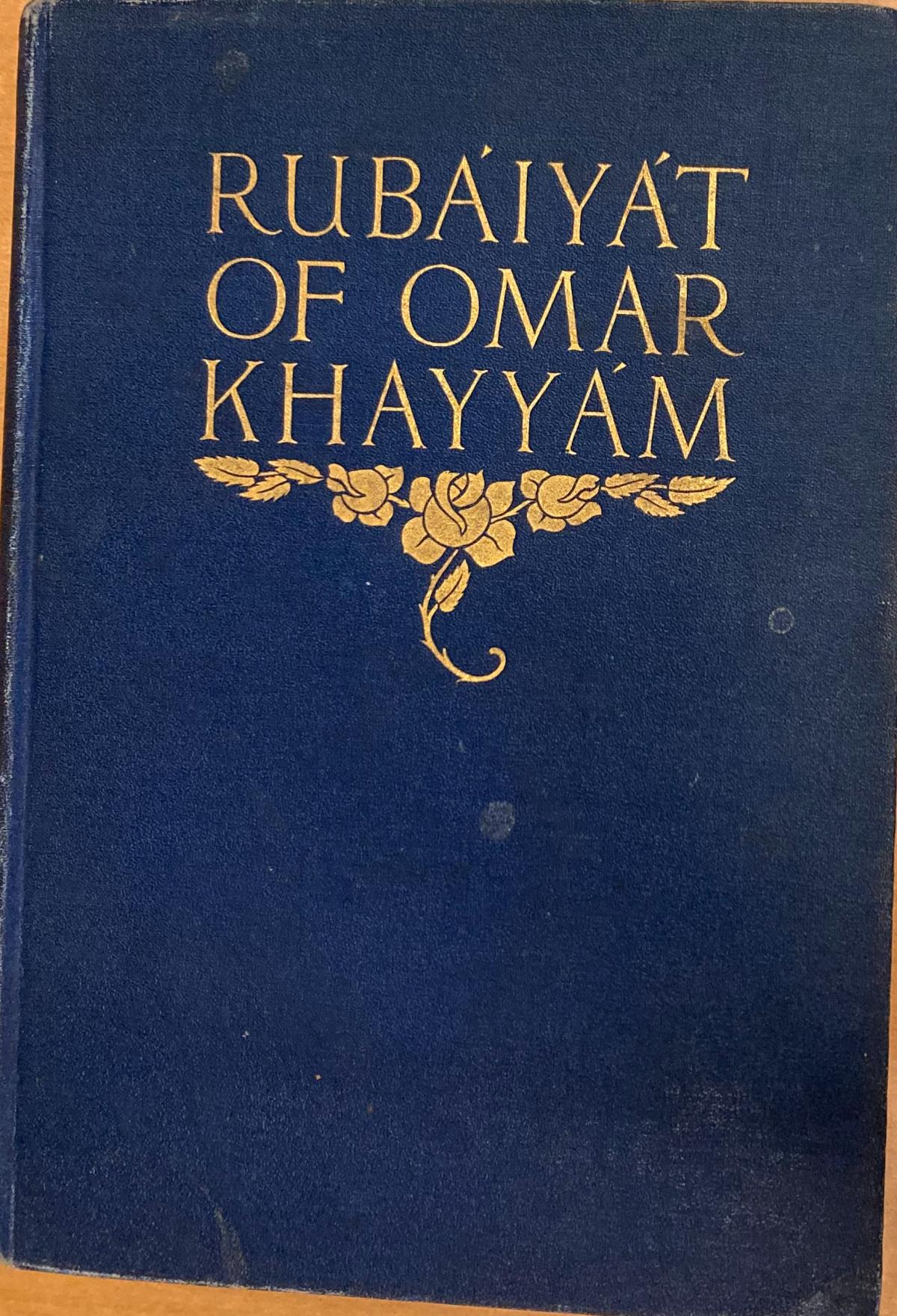Rubáiyat of Omar Kháyyám is a collection of Persian quatrains penned by titular astronomer-poet Kháyyám during the 11th century, translated into English and organized into a rough plot by 19th century English aristocrat Edward FitzGerald. This undated edition, presumed to be a product of the early-twentieth century, was published by the Hubbell Publishing Company in New York and manufactured by R & R Clark Limited in Edinburgh, according to the front and back cover interiors, respectively. There is no assertion of which specific translation is used, seeing as FitzGerald repeatedly revised his work, but the stanzas exactly replicate those found in 1859’s first edition. Additionally, ownership of this 203-page tome is attributed to a Fulton Oursler via an ‘ex libris’ bookplate (partially obscured by the OSU special collections plate) embedded in the first page, implying the copy belonged, at one point, to his personal library [See image 2]. On the page opposite, the name Grace Perkins is written in black ink, below it ‘Christmas 1922’ in blue ink [See image 3].
The Perkins-Oursler copy is a hardcover sealed within now-faded blue grooved cloth [See image 1]. Embedded gold lettering adorns the front cover and spine. Its pages are firm, but have clearly faded from their original white tone into a yellowish-brown. Two pages near the end possess large stains near their furthest reaches, their brown hue suggesting coffee or a related beverage [See image 5]. The copy is well-worn, featuring additional demarcations/stains on its exterior and a loosened binding. Aside from the bookplate and ownership signature, there are several doodles along the margins throughout this edition. The title page sees someone scratch hash marks below the ‘R’ of Rubáiyat and the ‘K’ of Kháyyám, while page 121 spotlights a signed illustration separate from those officially included [See image 4]. This occurs on an empty page in between stanzas, in which the publisher placed decorative emblems. On the left side, the unofficial illustrator has transformed one such circular emblem into a grinning sun. Looking to the right, one will notice a densely shaded face possibly adorned with a turban. At risk of presumption one might think the reader was inspired by the verse to conceive of how they viewed its narrator. All of the edition’s personalized edits were made with pencil.
Aside from Kháyyám, FitzGerald, and the mysterious margin artist, two other names contributed to this edition: English ‘orientalist’ Reynold A Nicholson and illustrator Gilbert James. Nicholson contributes an introduction and set of explanatory notes, intending to elucidate the precise meaning of passages in which he deems original Persian is more direct and transparent than translated English. His notes refer exclusively back to the poem’s relationship to Islam and 11th century Persia, less interested in assessing FitzGerald’s contemporary English allusions than in circumventing them altogether. James’ illustrations appear printed on a thicker material than the edition’s other pages, and feature its only use of color [See image 6]. Almost all of them feature a figure which represents the poem’s narrator. These pieces are always complemented by a reprinting of the specific stanza which they represent. They are not included in the order in which their respective stanzas appear; for example, the image below is the first stanza to appear, despite being stanza 34 within the context of FitzGerald’s Rubáiyat. Stanza 34 does appear once more in its appropriate place, chronologically speaking [See image 7].








